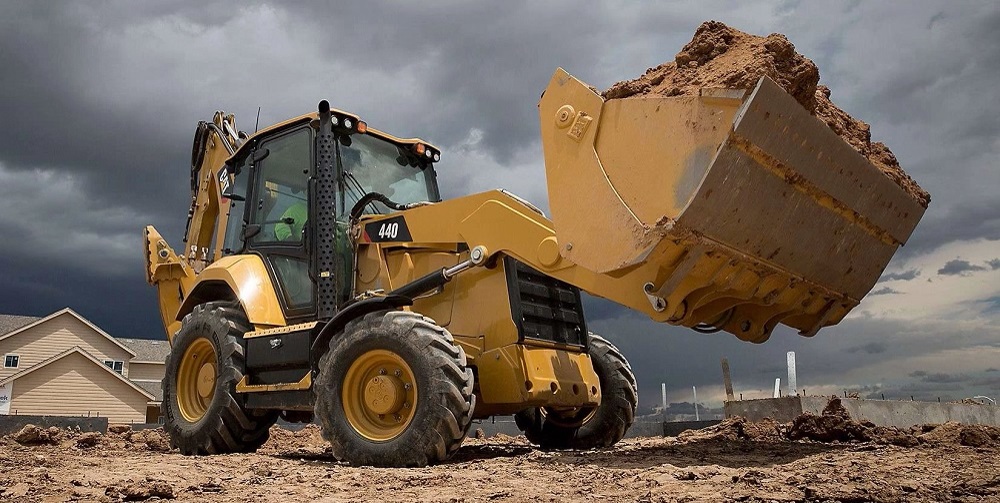Boom Lift Rental: Reach New Heights Securely
Boom Lift Rental: Reach New Heights Securely
Blog Article
Leasing Vs. Purchasing Building And Construction Equipment: Making the Right Choice for Your Job
When getting started on a building and construction task, among the important choices that project stakeholders and managers deal with is whether to get or rent construction devices. Both options have their benefits and downsides, making the selection a pivotal one in the task planning process. The decision rests on numerous variables such as expense factors to consider, task period, devices maintenance, threat, versatility, and scalability management. Each element plays an essential duty in identifying the most ideal path for the job's equipment requirements. boom lift rental. Allow's check out these variables further to comprehend how they affect the decision-making process and ultimately the success of the project.
Cost Factors To Consider
Renting out devices commonly needs lower first payments compared to acquiring, making it an eye-catching choice for short-term jobs or professionals with budget restraints. In the long run, continuously renting out devices can build up greater prices than purchasing, especially for prolonged tasks.
On the other hand, getting construction devices involves higher in advance costs yet can cause long-term financial savings, particularly for long-term jobs or regular customers. Having devices supplies adaptability, benefit, and the possibility for resale value once the task is finished. Furthermore, owning tools enables modification and familiarity with certain equipment, possibly enhancing effectiveness and productivity on-site. Eventually, the choice between renting and buying construction devices rests on the task's period, regularity of use, budget considerations, and long-lasting financial objectives.
Task Duration
:max_bytes(150000):strip_icc()/Balance_Must_Have_Earth_Moving_Construction_Heavy_Equipment_844586-c5b6ac9e5c074c11ad41e9acaea8f099.png)
On the other hand, for long-lasting jobs or continuous building and construction job, buying equipment might be the extra economical option. Acquiring equipment can bring about cost savings in the lengthy run, especially if the tools will certainly be regularly used. In addition, possessing tools gives a feeling of control over its availability and permits customization to fit certain task needs.

Tools Maintenance
Provided the critical role task period plays in determining the most cost-effective approach between renting and buying construction tools, the emphasis now shifts in the direction of checking out the essential element of tools maintenance. Appropriate upkeep is crucial for ensuring the ideal performance and longevity of building devices. Leasing tools commonly comes with the benefit of having well-kept equipment provided by the rental firm. This can alleviate the problem of upkeep jobs from the task proprietor or professional, saving effort and time. On the other hand, having equipment needs an aggressive method to maintenance to protect against failures, make certain safety and security, and extend the equipment's lifespan. Normal inspections, maintenance, and prompt fixings are necessary to keep owned and operated tools in top working condition. Consider maintenance expenses when determining in between renting and buying, as ignoring upkeep can bring about pricey repair services, downtime, and task hold-ups. Eventually, a well-maintained building devices fleet, whether rented out or had, is essential for the successful and effective conclusion of building and construction projects.
Versatility and Scalability
In the realm of building tools administration, the element of versatility and scalability holds considerable significance for task effectiveness and resource application. Choosing to rent out construction tools gives a high level of adaptability as it enables the quick adjustment of tools types and amounts based on the developing demands of a job. Renting out makes it possible for service providers to access a wide variety of specialized devices that may be needed for specific tasks without the long-lasting commitment of possession. This versatility is particularly advantageous for jobs with differing demands or unclear durations (dozer rental).
In addition, scalability, another critical element, is naturally connected to flexibility. Leasing building and construction tools supplies the benefit of quickly scaling operations up or down as task needs rise and fall. Specialists can swiftly add or exchange devices to match the project's altering requirements without the restraints of having assets that might become underutilized or obsolete. This capability to scale resources efficiently can cause price financial savings and enhanced job timelines, making renting a positive alternative for tasks needing adaptability and responsive resource allocation.
Danger Monitoring
Reliable risk management in construction tools operations is vital to making certain project success and mitigating prospective monetary losses. Building and construction projects inherently entail various dangers, such as tools break downs, accidents, and project delays, which can considerably affect the job timeline and budget plan. By very carefully considering the threats connected with owning or leasing construction equipment, job managers can make educated decisions to lessen these prospective threats.
Renting out building and construction devices can offer a level of threat mitigation by moving the responsibility of repair and maintenance to the rental business. This can lower the monetary pop over to this site worry on the project owner in case of unforeseen devices failures (forklift rental). Furthermore, leasing provides the versatility to accessibility customized devices for certain project stages, decreasing the threat of possessing underutilized equipment
On the other hand, owning building and construction devices gives a sense of control over its use and upkeep. Nevertheless, this likewise suggests birthing the full obligation for repairs, maintenance expenses, and depreciation, raising the financial dangers related to tools possession. Mindful threat evaluation and consideration of factors such as task duration, devices usage, and upkeep needs are crucial in establishing the most appropriate option for reliable danger monitoring in construction projects.
Verdict
To conclude, when deciding in between purchasing and renting construction tools, it is crucial to think about expense, project period, equipment maintenance, scalability, flexibility, and danger administration. her explanation Each aspect plays a critical function in figuring out the most appropriate option for the task handy. By carefully assessing these elements, task supervisors can make an educated decision that straightens with their budget, timeline, and overall project goals.

Report this page